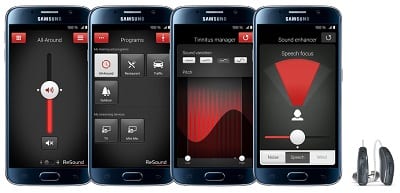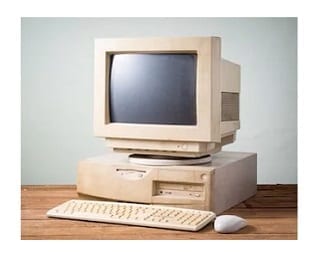

The post Hearing Aid Technology and Innovation appeared first on Auckland Hearing.
]]>
Like computers, tablets and phones, innovations in hearing aid technology is improving quickly. Hearing aids have more and more functions and features which fit into tiny packages that sit in or behind your ear. Current hearing aids do more than compensate for hearing loss with amplification. They are small computers that measure your sound environment then modify the way they amplify to maximise your hearing clarity.
When getting hearing aids, we need to consider the technology level and functionality that will best compensate for your hearing loss. There are also other features and additional connectable technology you might find useful to make life easier.
Excellent core hearing aid functionality is key to success. Choosing the correct level of amplification, fitting to your ear and technology level for your hearing needs must be guided carefully by your Audiologist. Follow this link for more details about how we go about assessing your listening needs.
Once we have decided on the right hearing aid technology for you, we can consider the added features that are available. These can help with ease of use, connectivity and better hearing in specific listening environments. These features are available at most technology levels. Once we have decided on the right hearing aids for you, we can determine if you would like any additional technology to go along with them.


In an ideal world, hearing aids measure the sound environment, highlight the sound you want to hear and bring it to you with increased clarity. In most cases, hearing aids do this well. However, at times, you may wish to adjust the hearing aid sound for the environment you are in. You may want to appreciate the nuances of music, hear the person who is speaking from behind you, like in a car; or understand better in a particularly reverberant (echoey) room.
In these cases, you may want to change the way the hearing aids are working; adjust the volume or focus on sound in a particular direction. These are the situations where a remote-control app may come in handy. Apps usually give you the option to change your hearing aid volume, program setting and, in some cases, pitch and adjust how the hearing aids respond in noise.
Rechargeable batteries in hearing aids have been available for several years. Within the last year, we have seen a surge of new rechargeable hearing aids from more manufacturers with improved battery life. The three main reasons to choose rechargeable hearing aids:
New hearing aids from Starkey and Oticon can now work as a fitness tracker, measuring the steps you do each day. Some hearing aids have inbuilt systems to keep you active both physically and cognitively. Features released in 2019 in by Starkey are:
Voice to text transscription allows you to communicate with someone who speaks a different language. Speak into your phone and it translates into text of the language you are commincating to. They talk back into your phoen and it translates back to English (or other language) and is spoken into your hearing aids.
Hearing aids self check lets you know if you hearing aids are working as expected. When the hearing aids are new we run a check in the office. Then at anytime this test can be rerun with the results compared to the intial test. The hearing aids will let you know if they are working as expected or if they are not working correctly which part of the hearing aids needs to be repaired. The microphone, amplifer or receiver (lond speaker). This allows for accurate trouble shooting and keeping your hearing aids working as expected at all time.

Connecting your hearing aids directly to your TV, sound system or tablet means you will hear the sound a lot clearer the first time. Following the dialogue in movies and TV becomes so much easier. In most cases, we need to add an intermediate device that sends the signal from your preferred audio device to your hearing aids.
One of the biggest challenges for people with significant hearing loss is hearing across distance. Speech understanding can be difficult over more than a few meters, even the best hearing aid technology. Another built-in advantage of the connectivity is that you can use your phone as a remote microphone. Just put your iPhone at the other end of the table or give it to the person with the quiet voice. The sound that reaches the iPhone microphone (or a connected remote microphone) and will be sent directly to your hearing aids.

For some people getting into the clinic to see your audiologist can be a challenge. Maybe you live a long way from the clinic, are not able to get to appointments during work hours or are homebound, for medical or transport reasons. If this describes you, then we have a solution – Telecare audiology is now a reality.
Tele-audiology means that some of the hearing aid fitting process can be delivered from the comfort of your home or office. Once we have done a thorough hearing assessment and have fitted the hearing aids in the clinic (using real ear measures), we can do further follow-ups from a distance. All you need is a smartphone, and your hearing aids can be adjusted over the internet. Being able to customize your hearing aids from the comfort of your home makes the process of getting hearing aids more manageable than before.
Finding the most discrete hearing aids is a priority for many new hearing aid users. Cosmetics, of course, has to be balanced with comfort, reliability, sound quality and functionality (hearing well in more complex situations). Some of the smaller hearing aids, look great and may be able to compensate well for your hearing loss, but may not work as well as other styles in difficult listening situations.
The most commonly fitted style of hearing aids in recent times is the Receiver In the Canal (RIC), also known as the Receiver In The Ear (RITE) / (RIE). These hearing aids have a relatively small hearing aid that sits behind the ear, the receiver (loudspeaker) that sits in the ear.
These hearing aids are discreet, comfortable and easy to wear. If there is a change in hearing levels, the receiver can be changed easily to a more powerful loudspeaker, in the clinic. Or if the receiver breaks down, it can be replaced in the clinic with less hassle (at a significantly lower repair cost). Receiver in the canal hearing aids can be worn with universal fit domes or custom moulds.
There are also many behind the ear styles available with various tubing options for those with more significant hearing loss or other specialise hearing needs.
Some people prefer not the have anything sitting behind their ear. There are various size options available to match your priorities, including Invisible in the Canal (IIC) hearing aids, Completely in the Canal (CICs) and In the Ear (ITE) hearing aids. Most brands have these hearing aid styles available.
ITE hearing aids have historically come with trade-offs in comfort and reliability. Having an electronic device deep inside your ear means more problems with moisture and wax; these issues improved dramatically over the past few years. There are many in the ear styles available.
In my experience, most people like milk with their tea. Some people enjoy sugar in their coffee. Sometimes I prefer herbal tea.

Significant research and development in hearing aid technology means new hearing aids are being released almost continually. As you can see, there are many options to be considered when choosing hearing aids. It is essential to consider how you would like your hearing aids to work for you. Our needs assessment will help steer you in the right direction to get the hearing aids that suit your lifestyle and listening needs best. Finding out about your preferences is an integral part of choosing the best hearing aids for you.
At Auckland Hearing, we keep up to date with new developments from all the manufacturer’s product lines. This is so we can choose the most up to date hearing aids that are best suited to your needs.
The post Hearing Aid Technology and Innovation appeared first on Auckland Hearing.
]]>The post Hearing aid batteries – types, sizes & recycling appeared first on Auckland Hearing.
]]>
Yellow labelled size 10 hearing aid batteries are used in the smallest hearing aids including Invisible in the canal (IIC), completely in the canal (CIC) and the extra small behind the ear receiver in the canal (RIC) hearing aids styles.
They last between 3- 7 days depending on the degree of hearing loss and technology in the hearing aids.

Brown labelled Size 312 hearing aid batteries are used in some receiver in the canal (RIC) and in the ear (ITE) hearing aids.
They last about 10 – 14 days depending on the level of amplification and functionality in the hearing aids. Using functions like streaming sound from devices like your phone has a high battery drain and shortens battery life.

Orange labelled Size 13 hearing aid batteries are used in some receiver in the canal (RIC), behind the ear (BTE) and in the ear (ITE) hearing aids.
They last around 10 – 14 days depending on the level of amplification and functionality in the hearing aids. Using functions like streaming sound from devices like your phone has a high battery drain and shortens battery life.

Blue labelled Size 675 hearing aid batteries are used in hearing aids that require a lot of power including bone conduction hearing aids (BAHA) and cochlear implants (CI).
They last about 10 – 14 days depending on the level of amplification and functionality in the hearing aids, BAHA or CI.
Streaming is now available in some CIs and this will increase the battery drain.
Disposable zinc-air batteries are the most common type of hearing aid batteries. They have a sticker on them that covers small holes in the top of the battery. Once you pull the sticker off air gets into the battery and it begins to work. Zinc-air batteries usually last between 5 and 14 days depending on the battery size.
Once the sticker is pulled off the battery will continue to drain even if the hearing aids are not being used.

Rechargeable silver-zinc and nickel-metal hydride batteries generally last 10 to 14 hours (a day) before needing to be recharged – usually over night. The batteries look similar to zinc-air batteries but they do not have the holes to let air in.
An advantage of both Rechargeable Silver-zinc batteries and nickel – metal hydride batteries is that if the batteries run out, the same size disposable zinc-airbatteries can be used This might be helpful if they run out during the day or if you go on holiday and do not want to take a charger with you.
Rechargeable silver-zinc and nickel-metal hydride batteries last about a year and then need replacing. When you get your hearing aids at Auckland Hearing we notify you annually when it is time to renew your rechargeable batteries.

Lithium-ion (Li-ion) batteries are sealed within the hearing aid and are only removable by the hearing aid manufacturer. They are expected to last for 5 to 6 years, potentially the life of the hearing aid.
For the batteries to be replaced the whole hearing aid has to go into the manufacturer for a service.
It does not matter what branding is on your batteries, often hearing aid batteries are re-branded by a hearing clinic or a manufacturer. Clinics that fit hearing aids may be a better choice than other retailers, as they know the importance of good quality batteries. At Auckland Hearing we sell batteries by the card or at a discount by the box.

Check the expiry date on the back of the battery pack. The expiry date on the back fo the packet should be at least a year away. Expired batteries not only have a shorter life, they may secrete a corrosive white power into the battery compartment of your hearing aids.
It is best to buy your hearing aid batteries from a retailer that sells a lot of batteries, so they have not been sitting on the shelf for a long time.

Auckland Hearing has a hearing aid battery recycling program. Please bring in your used batteries as we will make sure they are disposed of safely.
We send our used hearing aid batteries to UpCycle who hold EPA approved battery export permits. The batteries are exported to South Korea for processing, where they get stripped off and chemicals are extracted for recycling.
The post Hearing aid batteries – types, sizes & recycling appeared first on Auckland Hearing.
]]>The post ACC hearing aid batteries – how to order batteries for ACC funded hearing aids appeared first on Auckland Hearing.
]]>
When you finalised you hearing aids your Audiologist sent in a battery request form for your ACC hearing aid batteries. ACC knows the size and type of batteries you need. The quantity of batteries you are expected to need is also on file and they are allocated to you each 6 months or so.
Time needed: 5 minutes.
When you need new batteries you can order more in the following ways:
Fill in your ACC number and your date of birth and then order more batteries
Freepost 225409
ACC Battery request
PO Box 62253
Sylvia Park
Auckland 1644
by phoning Community client direct on 0508 222 546.
Or for any other questions about ordering your ACC hearing aid batteries or more information about your hearing loss claim contact the ACC Hearing Loss team on 0800 101 996.



The post ACC hearing aid batteries – how to order batteries for ACC funded hearing aids appeared first on Auckland Hearing.
]]>The post Do I need hearing aids? What is the right solution for me? appeared first on Auckland Hearing.
]]>



The post Do I need hearing aids? What is the right solution for me? appeared first on Auckland Hearing.
]]>The post How to apply for ACC Hearing Aid Funding appeared first on Auckland Hearing.
]]>You may be able to get funding for hearing aids through ACC (Accident Compensation Corporation). So how do you apply for ACC hearing aid funding?
You may qualify for ACC hearing aid funding if you:
The level of ACC hearing aid funding for each claimant is decided by assessing each individuals situation and attributing how much of the hearing loss is due to the accident or noise exposure.
How to apply for ACC hearing aid funding
The ACC hearing aid funding process starts with a visit to your GP. Your GP will need to apply to ACC on your behalf.
ACC will send you a pack with information and some forms to fill in and send back to them. They will ask about your accident or work history.
ACC will send you a request to see an Audiologist for a full diagnostic hearing assessment. Please give us a call at Auckland Hearing; we will make you an appointment. We will do a full diagnostic hearing test and fill in the forms to send them back to ACC. ACC covers the cost of this hearing test.
ACC will make you an appointment to see an ENT specialist. They will decide how much of your hearing loss is due to noise and how much is from other things, i.e. age. ACC covers the cost of this appointment.
ACC will make their decision and send you a letter letting you know at which level of funding you have qualified.
We will see you again at Auckland Hearing for a need assessment appointment to decide which hearing aids are best for you.
We can provide fully funded hearing aids at all funding levels, or you can top up to other hearing aids if you choose to.
In 2014 funding was changed and improved for ACC claimants here are some more details about the current ACC funding system.
How to order your ACC funded hearing aids batteries
If you do not feel ACC is the right path for you, please check out the other hearing aid funding options in New Zealand.
If you are not sure about whether you could be eligible for an ACC claim or would like more information, please make an appointment for a free hearing check and discuss your options and the way forward.
The post How to apply for ACC Hearing Aid Funding appeared first on Auckland Hearing.
]]>The post Wearing and Caring for your Custom Earplugs appeared first on Auckland Hearing.
]]>
Red is for the right ear and Blue is for the left ear. The removal cord sits at the bottom of your ear canal. To put your custom earplugs in, hold them with your thumb on the bottom (near the removal cord) and finger on the top and they will easily slide in.
Your custom earplugs may be a bit grippy at first, you can use some water-based lubricant to help them fit in if needed.
Each time you use your earplugs give your earplugs a wipe with a tissue or a soft cloth when you take them out. Please store them in the case that they came with and keep them away from moisture, heat or direct sunlight.
Your custom sleep earplugs (pictured above) can be cleaned in hot soapy water, then rinsed. Allow them to dry out before wearing them.

The filters in a musician (or other) earplugs must not be immersed in water.
To clean them, the filters can be popped out with a gentle squeeze and then you can clean the plugs in soapy water.
Dry your earplugs thoroughly before putting the filters back.
Our ears continue to grow over our lifetime and silicon shrinks. This means that over time the earplugs will become looser and will not block as much sound (or swim plugs may let water in). With a lot of wear, earplugs discolour or the material may stiffen.
Your custom earplugs could last many years but may not be as effective after a few years. Children’s earplugs for swimming need to be replaced more often as their ear shape and size is continually changing. For optimal function, it is recommended you get new earplugs every 2 – 4 years (depending on what you are using them for).
The company that makes your earplugs keeps a copy of your ear impressions on file. This means if you lose one or both plugs they can be remade easily. Just give us a call and we will reorder them for you. The amount of time
your impression files are kept is variable between companies (from 2 – 4 years). After that time you will need to come back into the clinic for new ear impressions to be made.
The post Wearing and Caring for your Custom Earplugs appeared first on Auckland Hearing.
]]>The post Our quiet hearing clinic appeared first on Auckland Hearing.
]]>Hearing clinics must pass a noise test that is carried out by independent experts. Sound levels are measured with a very sensitive sound level meter to establish that the clinic meets the criteria to be able to assess hearing accurately.
In April 2014, we began renovating our new Auckland Hearing clinic. We painted, carpeted and got new signage, so you can easily spot us as you drive along Michaels Ave.
By early May 2014, we were up and running. Our lovely new and quiet rooms passed the noise testing assessment, we are able to see all government funded clients, including ACC.
Auckland Hearing clinic is in the middle 5 five shops. The shop on the far left is currently being renovated into a lovely new organic cafe. Once it is up and running, it will be a great place to have a break before or after an appointment.
The post Our quiet hearing clinic appeared first on Auckland Hearing.
]]>